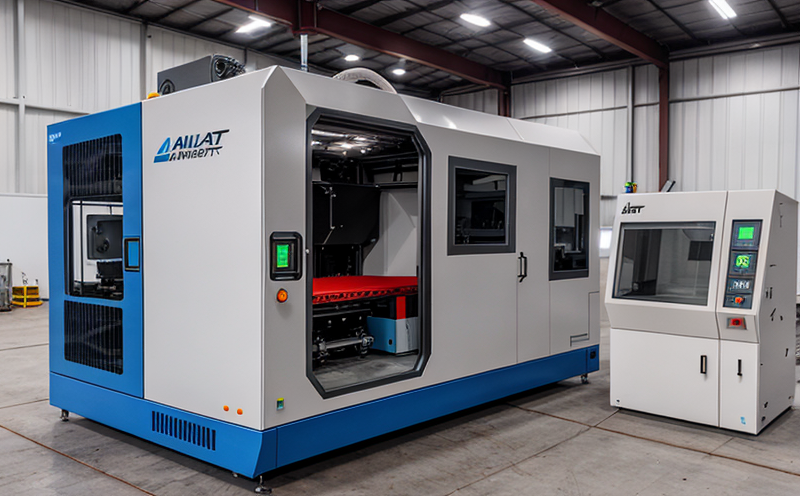ASTM F3492 Microstructure Evaluation Testing of AM Parts
The ASTM F3492 standard provides a framework for evaluating microstructures in additive manufactured (AM) parts. This testing is crucial for ensuring that the internal structure of these parts meets specified requirements, which directly impacts their mechanical performance and reliability. In industrial manufacturing and processing, precision and repeatability are paramount, making this evaluation critical.
The ASTM F3492 standard outlines a systematic approach to assess microstructural characteristics such as grain size, morphology, and orientation in AM parts. This testing is particularly important for parts fabricated using processes like laser powder bed fusion (LPBF), electron beam melting (EBM), and directed energy deposition (DED). The aim is to ensure that the microstructure aligns with the design intent and manufacturing process parameters.
Microstructural evaluation plays a vital role in ensuring that AM parts exhibit desirable mechanical properties. For instance, in LPBF processes, achieving optimal grain size distribution can significantly enhance part strength while minimizing porosity. The ASTM F3492 standard allows for precise control over these factors by providing detailed guidelines on specimen preparation and testing procedures.
The microstructural evaluation process typically involves several key steps: specimen preparation, heat treatment (if necessary), metallographic polishing, etching, and microscopy analysis using techniques like optical microscopy (OM) or scanning electron microscopy (SEM). Each step is critical to obtaining accurate and reproducible results. The standard emphasizes the importance of proper sample handling to avoid introducing errors that could compromise the integrity of the test.
Once prepared, the specimens are examined under a microscope equipped with appropriate software for precise measurement and documentation of microstructural features. Advanced imaging techniques can provide insights into grain boundaries, precipitates, and other microstructural elements that influence material behavior. These analyses help in identifying potential issues such as non-uniformity or defects that could affect part performance.
The results from the ASTM F3492 testing are used to validate the manufacturing process parameters and ensure compliance with design specifications. This information is invaluable for quality control, product development, and regulatory compliance. By adhering to this standard, manufacturers can enhance the reliability of their AM parts, ensuring they meet or exceed industry standards and customer expectations.
Understanding the microstructure of an AM part also aids in optimizing the manufacturing process. For example, by analyzing how different process parameters affect grain size and orientation, engineers can fine-tune settings to achieve desired mechanical properties without compromising production efficiency. This knowledge is particularly useful in industries where high-strength-to-weight ratios are critical, such as aerospace and automotive.
- The ASTM F3492 standard ensures that microstructural evaluations are consistent across different labs and facilities.
- It supports the development of reliable predictive models for AM processes.
- This testing helps in identifying the optimal parameters for achieving desired mechanical properties without compromising process efficiency.
Applied Standards
The ASTM F3492 standard is widely recognized and applied across various industries, including aerospace, automotive, medical devices, and energy. This standard is crucial for ensuring that AM parts meet specific performance criteria, thereby enhancing product reliability and safety.
In the aerospace industry, where weight reduction and strength are paramount, ASTM F3492 helps in validating the microstructure of critical components like turbine blades and engine casings. Ensuring these parts have the correct grain size distribution can significantly improve their durability under extreme conditions. Similarly, in the automotive sector, this standard is used to evaluate structural components that must withstand high loads.
For medical device manufacturers, ASTM F3492 provides a standardized method for assessing the microstructure of implants and prosthetics. This ensures that these devices are biocompatible and meet stringent quality control standards. In the energy sector, this testing is essential for evaluating components in power generation equipment, where reliability and performance are critical.
The standard also supports research and development efforts by providing a consistent framework for evaluating new AM technologies. By using ASTM F3492, researchers can compare results across different labs and facilities, facilitating the advancement of additive manufacturing techniques.
Industry Applications
The ASTM F3492 microstructure evaluation testing is particularly applicable to industries that rely heavily on precision and reliability in their products. These include aerospace, automotive, medical device manufacturing, and energy sectors.
In the aerospace industry, the use of AM parts has become increasingly common due to their ability to reduce weight while maintaining structural integrity. ASTM F3492 ensures that these parts are evaluated for microstructural features that could impact performance under extreme conditions. This testing is especially important for turbine blades and engine casings, where even minor defects can lead to catastrophic failures.
In the automotive industry, AM parts are used in high-strength structural components that must withstand significant mechanical loads. By ensuring that these parts meet the specified microstructural criteria, ASTM F3492 helps manufacturers produce reliable and safe vehicles. This standard is also beneficial for evaluating lightweight materials like titanium alloys and advanced steels.
For medical device manufacturers, ASTM F3492 provides a critical tool for assessing the biocompatibility of implants and prosthetics. Ensuring that these devices have the correct microstructure can significantly enhance their performance and safety. This testing is especially important for materials like titanium alloys and cobalt-chromium alloys.
In the energy sector, ASTM F3492 helps in evaluating components used in power generation equipment such as turbines and boilers. Ensuring that these parts meet specific microstructural criteria can enhance their reliability and performance under harsh operating conditions. This standard is also useful for assessing materials like nickel-based superalloys.





